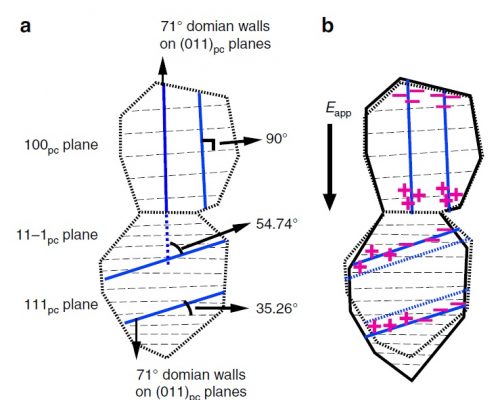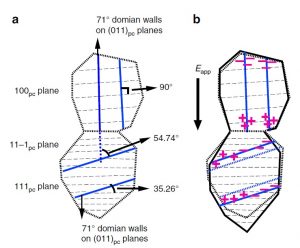
In collaboration with colleagues from Australia, Switzerland and France, Asst. Prof. Tadej Rojac from the Electronic Ceramics Department published a paper in Nature Communications entitled »Frequency-dependent decoupling of domain-wall motion and lattice strain in bismuth ferrite« (LINK). The study demonstrates that the piezoelectric response of multiferroic bismuth ferrite is distinctly different from that reported in classical ferroelectrics. Using in situ X-ray diffraction analysis, the authors revealed an unusual strain behavior of individual grains inside the polycrystalline matrix of the ferrite. Consistent with literature data, the strain arising from domain-wall displacements increases with decreasing driving-field frequency. Unexpectedly, the lattice strain shows an opposite behavior, i.e., its magnitude decreases with decreasing frequency. This particular strain decoupling was explained by analytical modeling, confirming the key role of the anisotropy in the electrical conductivity caused by the different orientation of conductive domain walls in different grain families within the polycrystalline matrix (see figure).
